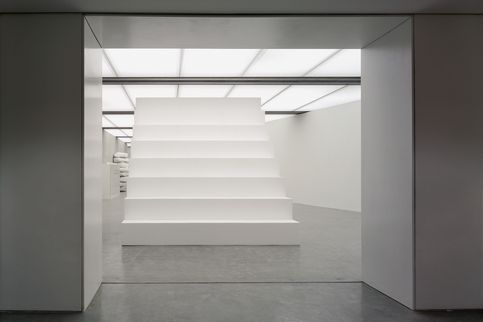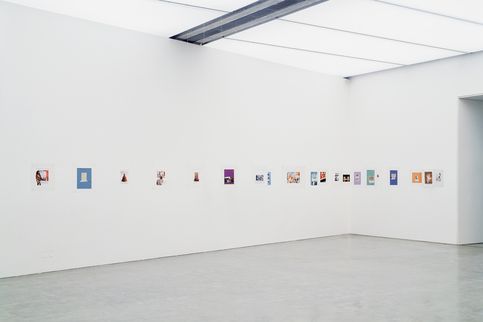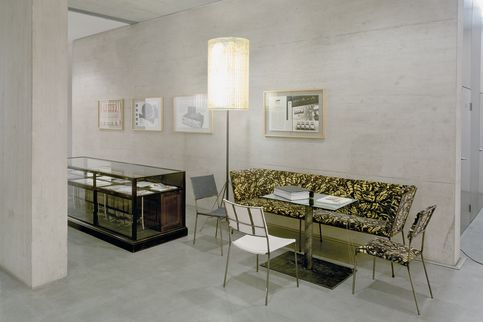postproduction
Generali Foundation Collection
Curator: Sabine Breitwieser
Exhibition production: Daniela Stern
This exhibition focused on works from the collection as seen from the standpoint of production, or rather "postproduction." This is the term used in the film and video production industry to refer to all processes whereby the film, once shot, is cut, edited, manipulated, or added onto; all processes similar to the methods used in the production of a collection.
The Generali Foundation sets out to build up its collection of contemporary art in a way that reflects the contemporary exigencies of art and the practices of the artists themselves. This involves a range of activities that go far beyond the traditional act of acquisition; they follow directly from the actual production of the artwork itself. On the occasion of this exhibition, a number of objects have been selected from the collection in order to highlight the importance the Generali Foundation attaches to this "postproduction" process Franz West, whose creations feature conspicuously in the Generali Foundation collection, was invited to structure the body of material and to design a form of presentation, which became part of the collection.
VALIE EXPORT's film installation, "Adjoined Dislocations" (1973), restored and made accessible to the public by the Generali Foundation two years ago, could be seen for the first time in a permanent installation. This key work was juxtaposed with a film installation from the same period, "Body Press" (1970-72), by the American artist Dan Graham. Both are early instances of the use of the (film-)camera as an extension of the human body and its motion within a specific space. There was a Viennese premiere presentation of films made in 1969-72 by Gottfried Bechtold including "Video Installation" (1972), which in international terms is a relatively early example of a closed circuit installation, the "Media Valise" (1972), and a number of videos. Bruno Gironcoli had restored for this exhibition an installation that has become legendary in Austria, "Shoes" (1971); with it, a series of tempera works of the same period and an early polyester object. This last was juxtaposed with "Walt Disney Productions" (1995), a group of works by the French artist Bertrand Lavier, in which imaginary modernist artworks are reconstructed from real comics. The group project by Küng/Margreiter/Poledna/Pumhösl on the "Young Viennese Scene" (Vienna Secession, 1991), a biennial of young contemporary art, was shown in an altered context - Heimo Zobernig contributed a wall as a poster site. The Generali Foundation purchased Elke Krystufek’s original collages for her Weininger series (1993), and these were displayed to the public for the first time. The exhibition also included works by Rainer Ganahl, Marcus Geiger, Isa Genzken, Gordon Matta-Clark, and others.
The ways of "producing" a collection already tried by the Generali Foundation are many. They extend from the commissioning role, such as projects with Maria Eichhorn, Andrea Fraser, Dan Graham, Franz West, and Heimo Zobernig, which design commissions given to artists, etc.; by way of the acquisition, study, and restoration of historically important material (VALIE EXPORT, Gordon Matta-Clark, Walter Pichler); to the creation of contexts appropriate to artworks and to artists. Public presentation and public response are no less important than the accessibility, preservation, and documentation of the collection.





